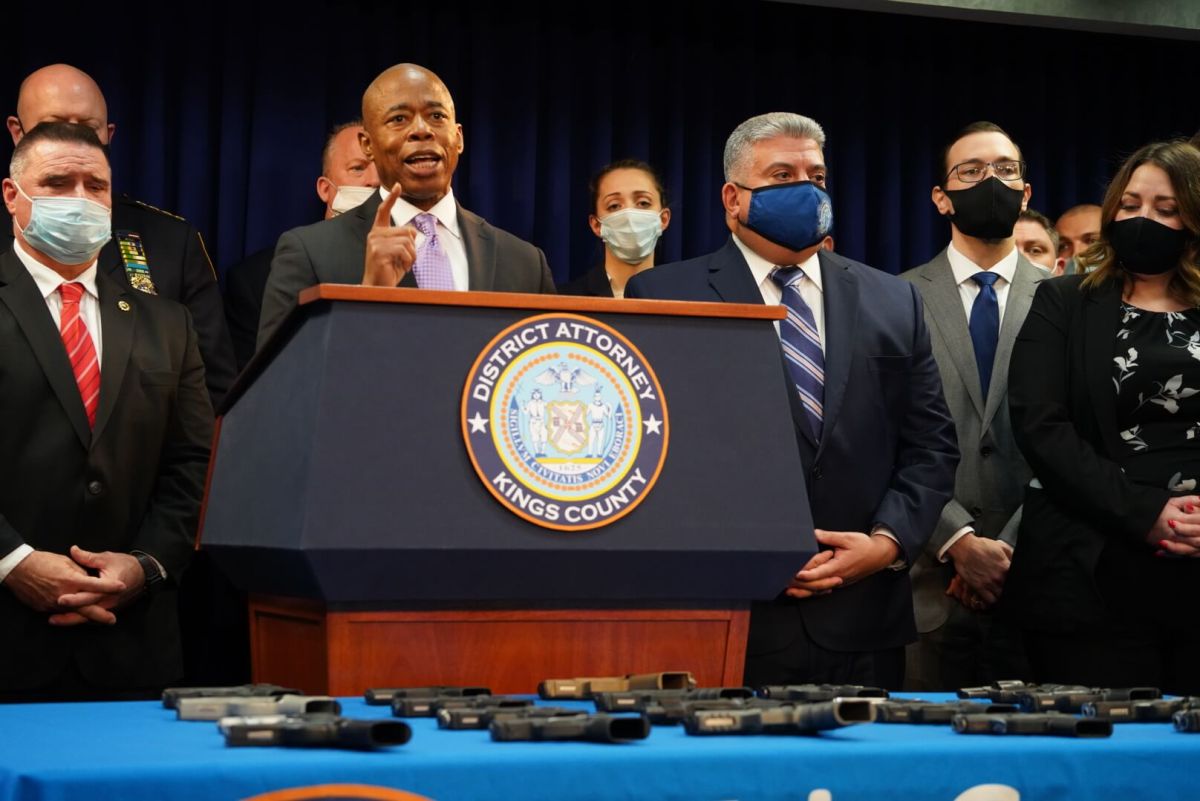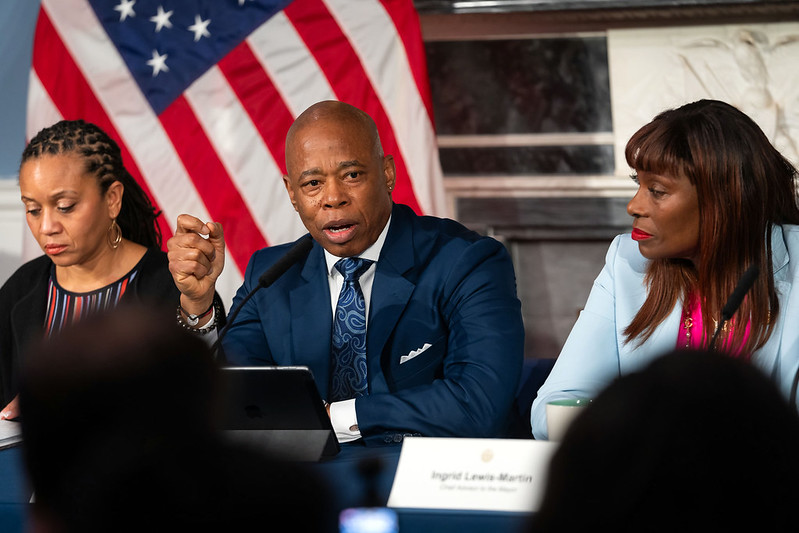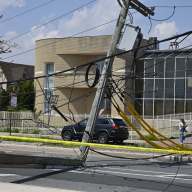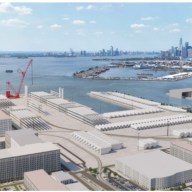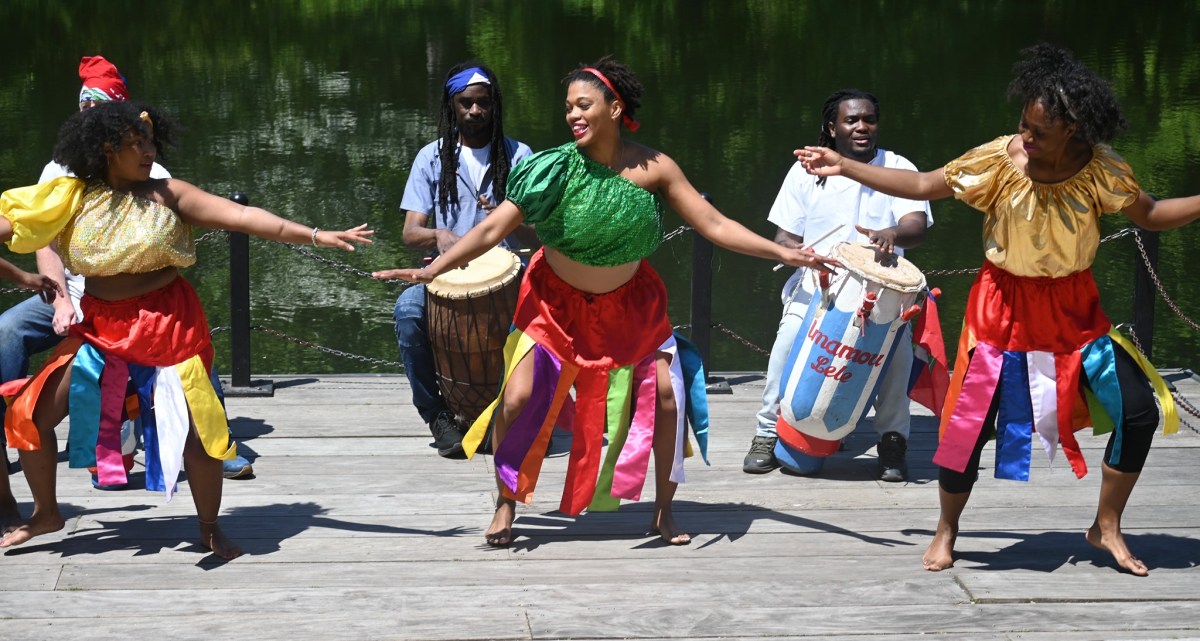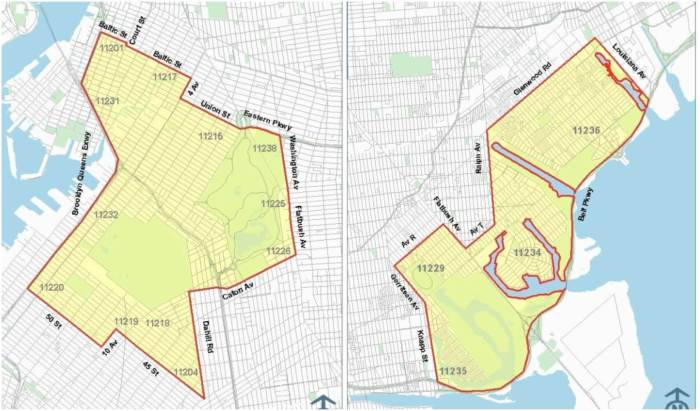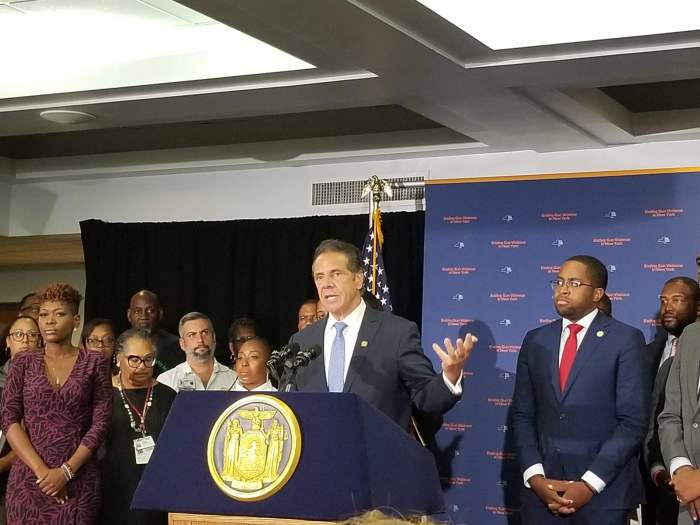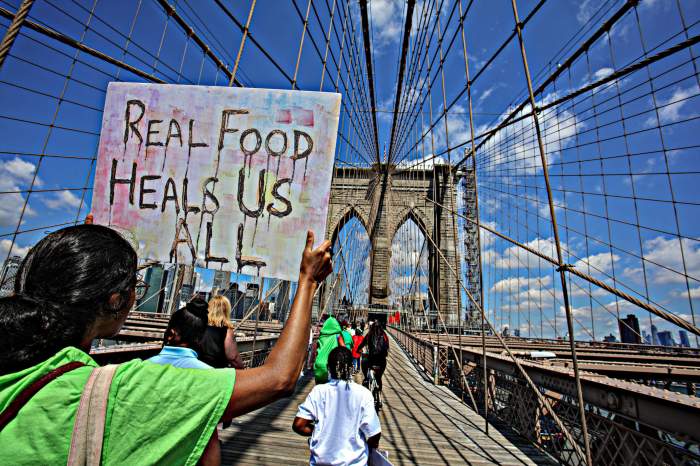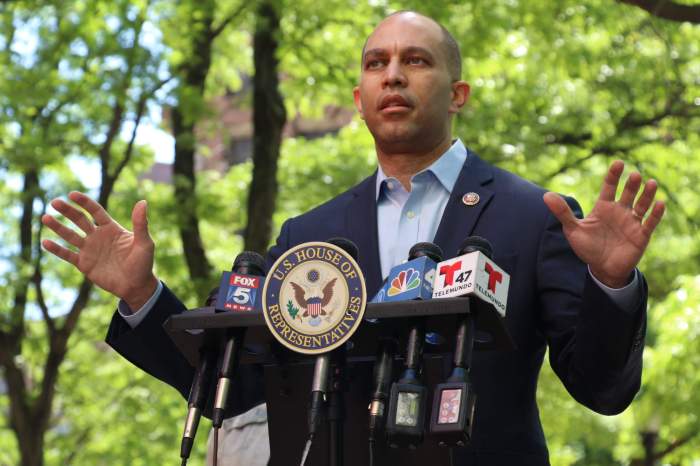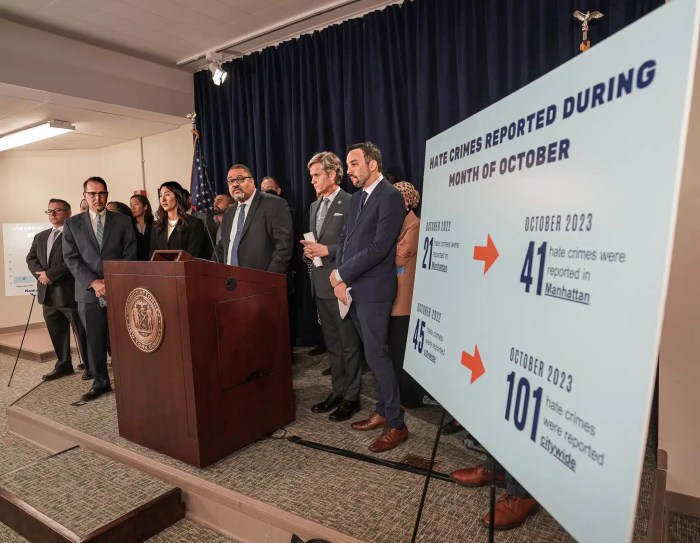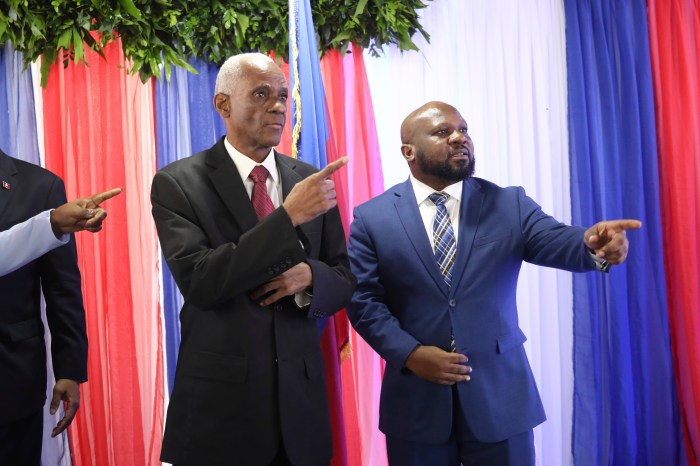The NYPD will be sending new, updated “plainclothes” units to police precincts with high rates of violent crime as part of Mayor Eric Adams’ plan to combat gun violence in the city — likely including several precincts in central and eastern Brooklyn, police sources said.
Adams said in a Monday speech that the work of the new unit will be concentrated in “30 precincts where 80 percent of violence occurs.”
The mayor did not say which precincts those would be, but police sources told Brooklyn Paper that, based on aggregate statistics on violent crime such as homicide, shootings, and robberies, it would probably include the 67th precinct in East Flatbush, the 73rd in Brownsville, the 75th in East New York, the 77th in Crown Heights, and the 79th in Bedford-Stuyvesant.
A police memo obtained by the New York Post confirmed that the units will be sent to those precincts, as well as four others: the 69th precinct in Canarsie, the 71st precinct in Prospect Lefferts Gardens and southern Crown Heights, the 81st precinct in Bedford-Stuyvesant, and the 83rd precinct in Bushwick, as well as at NYCHA developments in central and eastern Brooklyn.
The revived “anti-crime” units, now dubbed “neighborhood safety teams,” are delineated in the mayor’s “Blueprint to End Gun Violence,” which was released on Monday in the wake of the shooting death of NYPD Officer Jason Rivera in Harlem.
“Although we became safer as a city, trust me, there are neighborhoods that never saw the relief. And I’m going to go and find those neighborhoods,” the mayor told reporters on Jan. 24. “We have 30 precincts in this city that contribute to 80 percent of the violence, out of 30 precincts. The resources need to be there. That’s what we’re going to do.”
The original plainclothes units were phased out in 2020 under former Mayor Bill de Blasio; the units, which had officers go undercover in civilian attire, were historically responsible for a disproportionate share of use-of-force and shootings, particularly when utilizing stop-and-frisk.
Adams had been a fierce critic of that move, and campaigned for mayor on reinstating it.
The new units, Hizzoner says, will still be identifiable as NYPD officers based on their attire, and will be specially trained — with the department taking care to assign “the right officers” to the units.
“You must have the right training, the right mindset, the right disposition, and be…emotionally intelligent enough that you are ready to engage with someone on the street,” said the mayor, who then noted that over 400 officers are currently “in the pipeline” to join the unit.
The teams will be deployed in about three weeks, and the city will hold “listening tours” in affected communities to learn from the mistakes of past plainclothes units, Adams promised.
The neighborhoods the units are set to be deployed to are majority-Black, per census data compiled by the Department of City Planning. The old plainclothes units were heavily involved in stop-and-frisk during the Bloomberg era, when, at its 2011 peak, nearly 700,000 people were subjected to stops later declared unconstitutional. That year, 88 percent of those stopped were not guilty of any crime, and 87 percent were Black or Latino.
Criminal justice reform advocates reacted negatively to the mayor’s announcement, on anti-crime units and other aspects. The Legal Aid Society, Brooklyn Defender Services, and other public defender agencies said in a statement that without addressing the “culture and policies” that drove abusive and racially discriminatory practices by plainclothes units, the city would simply return to the mistakes of previous eras.
“Reinstating the NYPD’s Anti-Crime Unit without also addressing the culture and policies that drove that unit’s decades-long pattern of harassment and violence targeting Black and brown New Yorkers is a mistake,” the joint statement read. “Today’s announcement gives the community members who live with the legacy of hyper-aggressive policing no comfort that Mayor Adams’s Anti-Crime Unit will be different from its predecessors. The Mayor must focus on addressing long standing problems with NYPD’s culture of impunity before he doubles down on strategies that will only perpetuate the harms of that culture.”
Other parts of the plan call for increased foot patrols citywide, increasing resources and deployment for the “gun violence suppression division,” the expansion of youth intervention programs, and calling on the state to revise its bail reform law to allow judges to detain people based on “dangerousness.”
Adams also wants the state to revise its “Raise the Age” statute to allow trials of minors caught carrying illegal guns to take place in criminal court, rather than family court, if they do not reveal to police where they got their weapons. The mayor said that adult gang members had been abusing the law as a “loophole” by forcibly arming minors to take the fall for their own illegal weapons.
Whether Albany has an appetite for Adams’ proposals is another question. In response to the speech, Assembly Speaker Carl Heastie essentially told Adams to focus on his own problems.
“As the important discussion of public safety continues, one area he can take immediate action is to review and improve pretrial services in the probation department which he oversees,” Heastie told the New York Post. “This is critical to ensuring the goals of the Raise the Age initiative are realized.”
City Hall did not respond to a request to confirm the Brooklyn precincts where the new units would be deployed.
This story has been updated to include additional precincts as reported by other outlets.



